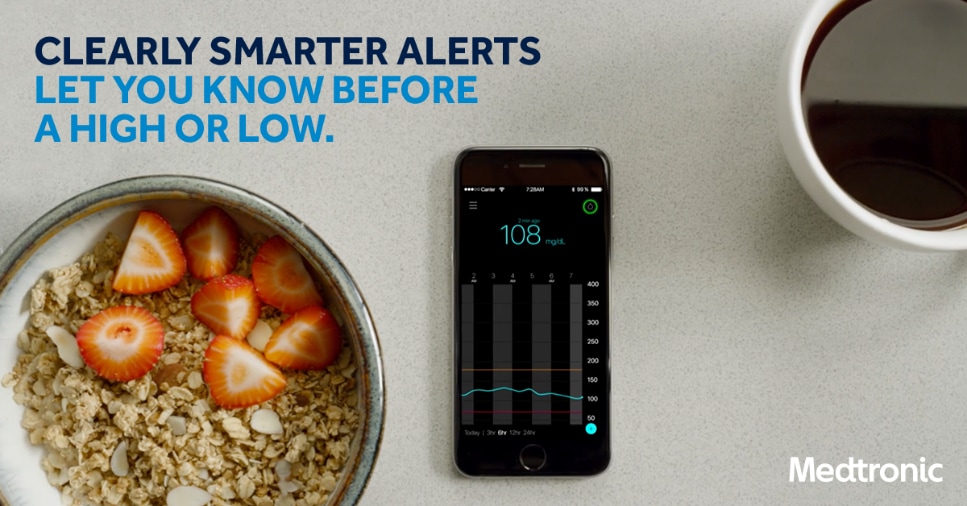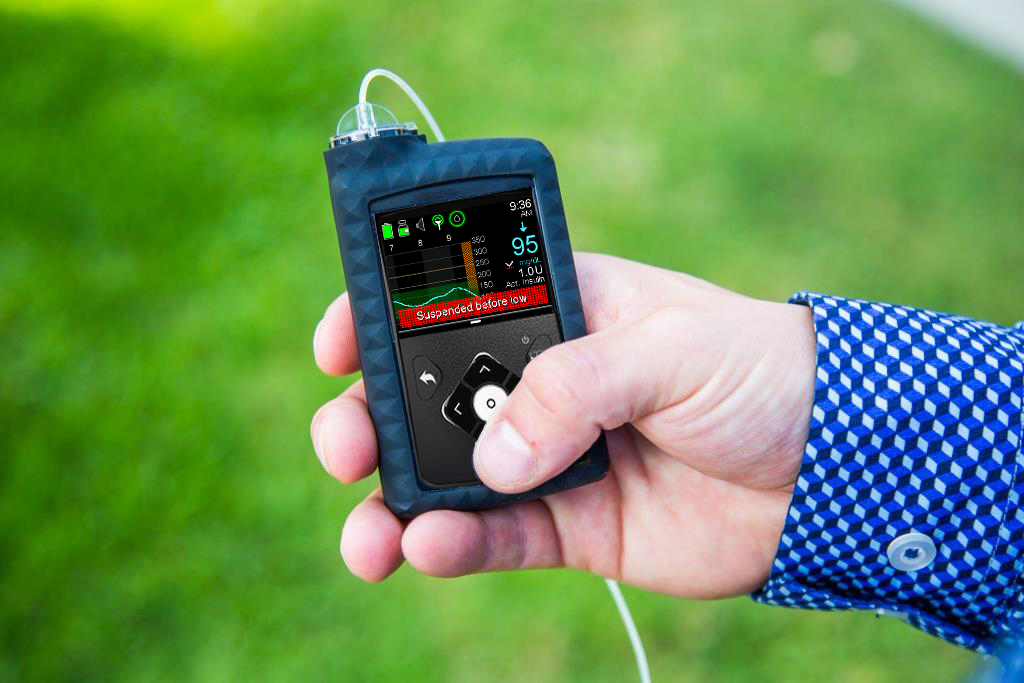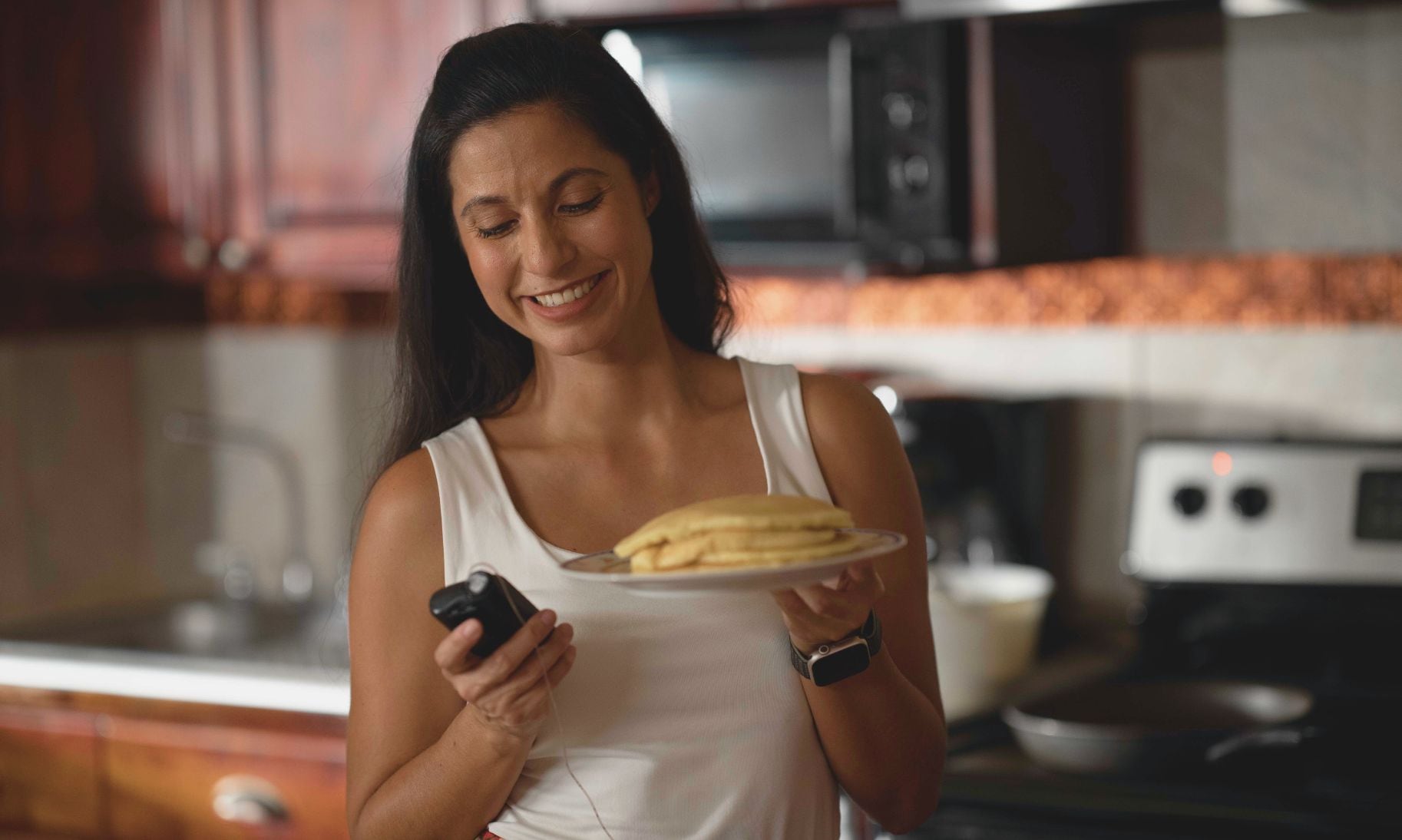How to calibrate your CGM system

When it comes to using continuous glucose monitors (CGM), there are a few pieces of information you learned during training that can impact your experience using the MiniMedTM 530G with EnliteTM. We recently asked some of our customers what CGM concept they needed a refresher course on, and the concept we heard consistently was “Calibrating Sensors.” Here are some of the basics on how your MiniMedTM system uses calibration readings once they are entered into your pump.
All CGM systems today require “calibrations” to ensure glucose sensors perform with the best accuracy, but how they are incorporated into the CGM device and presented to you, the user, may differ between devices. Our MiniMedTM system algorithms have built in processes to help maximize sensor performance and minimize blood glucose (BG) reading errors and the physiological delay from a BG reading to sensor glucose (SG) reading.
In fact, our sensor calibration algorithms include a built-in delay for the moment when a newly calibrated sensor glucose number appears. The algorithm accounts for the natural delay from the time glucose enters blood in a capillary (where the BG is taken, to the time it gets to the interstitial fluid, so the pump screen will not show a newly calibrated sensor reading until about 15 minutes after the BG reading was entered. This method closely reflects your BG level at the time the calibrated sensor reading appears.
The algorithm also uses a multipoint calibration, which means instead of using the last BG reading taken to calibrate the sensor, it uses the last four calibration BG readings, assigning more weight to the most recent calibrations, to calculate the next calibrated sensor reading. The intent of using the last four calibrations is to minimize the possible errors in BG readings from impairing the overall sensor performance. These errors may be caused by testing without washing your hands or delaying the entry of BG values when glucose is rapidly changing.
What does that mean? It means that the next reading displayed after a calibration will often not match the reading entered from the BG meter. For example, you may enter a 115 mg/dL value as your calibration, but the next sensor reading may read 120 mg/dL. However, this doesn’t mean the sensor is inaccurate! All it really means is the accuracy of MiniMedTM systems is dependent upon the accuracy of the calibration BG readings you enter into the pump.
So how can you make sure you get the best accuracy from my sensor when calibrating?
Here are a few tips to use when calibrating your sensor so you can ensure you get the experience with EnliteTM sensor:
- Don’t use every BG reading as a calibration; simply calibrate 3-4 times a day when stable.
- Enter the new BG reading as a calibration right away; delaying or entering old BG values can have a negative affect because it is quite likely that your blood glucose could have changed in the time between the fingerstick and entering that reading into your pump.
- Do not calibrate when you see two arrows on the screen. This can most likely occur during a bolus, treating highs or lows or directly after or during meals.
- Use the “Cal Reminder” feature in the pump to schedule your calibrations when it’s convenient for you.
It may be helpful to think about calibrations as “check points” that you might come across while driving. The purpose of the check point is to ensure that drivers are in the right condition to continue on the road. If they pass the checkpoint successfully, then they can continue driving. Similarly, the BG meter reading “checks” that your sensor glucose is on the right track allowing it to continue to provide you with data. If not done correctly, it can affect your sensor’s accuracy and steer you in a different direction.
Visit our website for more information about calibrating your sensor. And remember, if you have any questions don’t hesitate to reach out to our 24-Hour Helpline for further assistance.
Want a crash course on another CGM topic? Let us know in the comments below.




Blog comments
Dear Liza,
I had a bad experience yesterday when I called Tech support; 5-12-16 circa 4:30PM eastern. I called and told them that I have been having incidents over several sensors in which the readings go extremely randomly up and down. Yesterday I watched the readings jump 150 or more at 5 minute intervals many times. Over a 5 hour period, I watched 4-5 peaks 250-350 followed by immediate dips to the 50-70 range. I called tech support and explained that I had calibrated three times prior to 5 PM; that all of the calibration ranges were at times that I was stable, no food, no exercise, & no arrows showing on the sensor reading. The finger stick readings were 5:17A 184, 9:58A 82, 4:21P 268, 4:48 267; all between 40-400 during stable periods. At the time of my call, the sensor was saying over 400. Two consecutive finger sticks 26 minutes apart proved that my blood sugar was stable in the 260 range. Within 30 minutes after the call ended, the sensor was again dropping double arrows every reading. When it got to the 70's range, I pulled the sensor. I read the calibration procedures on the Minimed website this AM. I was compliant and accurate with your posted procedure.
The tech support lady said that the calibration readings were too variable. When I pressed her for variation limits, she resisted giving an answer. The posted procedure says 400-40 during stable periods. But when I pressed he for limits to work with based upon her statement that I had not accurately calibrated, she said the calibration limits had to be within 20% of each other and that if they were not, I should take periodic finger sticks until I got one the WAS within 20% of the previous stick. 20% or less variation is not in Minimed's posted procedure.
I tried to explain to her the statistical improbability of a type 1 diabetic hitting a target that narrow 3-4 times a day and that I would spend most of my day and a dozen test strips trying to hit that narrow target each day. Furthermore, If I need to spend a dozen test strips each day to keep calibrated, I don't need CGM.
When I asked her again why I would see such wild variations in the readings when I knew that my activities, food, & calibrations were right, she said I had probably BUMPED THE SENSOR. Really? I had a five hour period of 5 excursions from 70 to 300 ending with a final excursion from over 400 to dropping to 70 after two successful calibrations said I was stable in the 260 range? And she says I PROBABLY BUMPED THE SENSOR?
Years ago, I experienced a similar experience with several 1st generation sensors. When I finally got tired of hearing it must have been something I was doing wrong, I stopped using the sensors. When the second generation came out, I gave them a try and I have found them to be pretty good for the most part. I think I've been using them about 2 years now. When I called yesterday, all of the answers I gave her were compliant to your listed calibration procedures; but she told me consistently that I had done it wrong; even to the point of making things up like a required 20% range between calibration readings. And when I asked how could there be that many peaks and valleys over a five hour period she says I bumped it?
I am to the point of being tired of hearing that I must have done it wrong when I know I was compliant with Minimed's posted procedure. This is why I stopped using generation 1 and I am near stopping using generation 2 because of their attitude. Does Minimed teach their tech support to make up stuff?
The last 3-4 sensors have given me smaller periods of instability than the one I experienced yesterday. I have 7 more sensors in house to see what happens. My insurance pays 100% for the sensors, so all I have to do is deal with the operation. But when I get tired enough of always being told it must be my fault, when I get told enough that I need so many finger sticks that I could do just as well without the sensors, I'll stop using them & just go back to 5-7 finger sticks per day.... again.... It was obvious to me that the lady yesterday was making stuff up to keep the responsibility in my end. She never once allowed or even questioned that there could be a problem with the equipment.
Many Thanks (for allowing me to vent),
Jim
Hi Jim, I’m sorry to hear about your recent experience using the Enlite sensor and for the variability you’re seeing. I can understand how this would be frustrating. I would like to see if there is anything else we might be able to do to help. I’ll have a member of our advanced trouble shooting team reach out to discuss this further with you.
I too have great swings with the sensor usage, I have found out the longer I use automode the more accurate it gets. I still do 4-5 ginger sticks a day , becouse I don’t trust the accuracy. We need to remember it’s a machine and a tool to help. On the other hand the new technology has been a huge pain in the butt, compared to my basic animus pump. Hopefully the next generation will be more accurate good luck
Thanks for sharing, Amber! If we can support you in any way with your sensor, please give us a call at 800.646.4633, option 1.
Post a new comment
Required fields are marked *